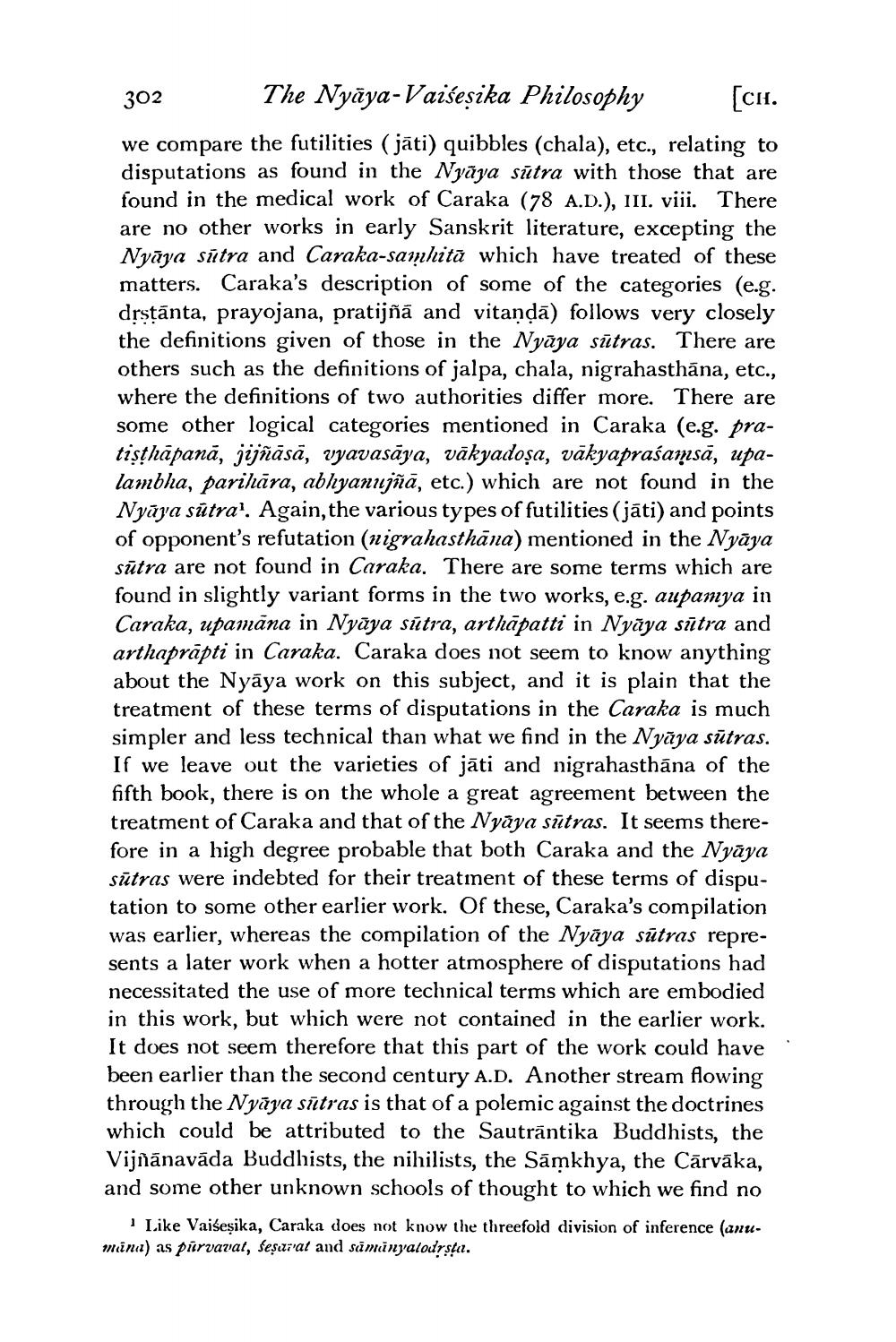________________
302 The Nyāya-Vaiseșika Philosophy [cH. we compare the futilities (jāti) quibbles (chala), etc., relating to disputations as found in the Nyāya sutra with those that are found in the medical work of Caraka (78 A.D.), III. viii. There are no other works in early Sanskrit literature, excepting the Nyāya sūtra and Caraka-samhitā which have treated of these matters. Caraka's description of some of the categories (e.g. drstānta, prayojana, pratijñā and vitandā) follows very closely the definitions given of those in the Nyāya sūtras. There are others such as the definitions of jalpa, chala, nigrahasthāna, etc., where the definitions of two authorities differ more. There are some other logical categories mentioned in Caraka (e.g. pratisthāpanā, jijñāsā, vyavasāya, vākyadoșa, vākyaprašamsā, upalambha, parihāra, abhyanujñā, etc.) which are not found in the Nyāya sutra'. Again, the various types of futilities (jāti) and points of opponent's refutation (nigrahasthāna) mentioned in the Nyāya sūtra are not found in Caraka. There are some terms which are found in slightly variant forms in the two works, e.g. aupamya in Caraka, upamāna in Nyāya sutra, arthāpatti in Nyāya sutra and arthaprāpti in Caraka. Caraka does not seem to know anything about the Nyāya work on this subject, and it is plain that the treatment of these terms of disputations in the Caraka is much simpler and less technical than what we find in the Nyāya sūtras. If we leave out the varieties of jāti and nigrahasthána of the fifth book, there is on the whole a great agreement between the treatment of Caraka and that of the Nyāya sūtras. It seems therefore in a high degree probable that both Caraka and the Nyāya sūtras were indebted for their treatment of these terms of disputation to some other earlier work. Of these, Caraka's compilation was earlier, whereas the compilation of the Nyāya sūtras represents a later work when a hotter atmosphere of disputations had necessitated the use of more technical terms which are embodied in this work, but which were not contained in the earlier work. It does not seem therefore that this part of the work could have been earlier than the second century A.D. Another stream flowing through the Nyāya sūtras is that of a polemic against the doctrines which could be attributed to the Sautrāntika Buddhists, the Vijñānavāda Buddhists, the nihilists, the Sámkhya, the Cārvāka, and some other unknown schools of thought to which we find no
Like Vaiseșika, Caraka does not know the threefold division of inference (anuminu) as parvavat, Sesarat and süminyalodrstu.




